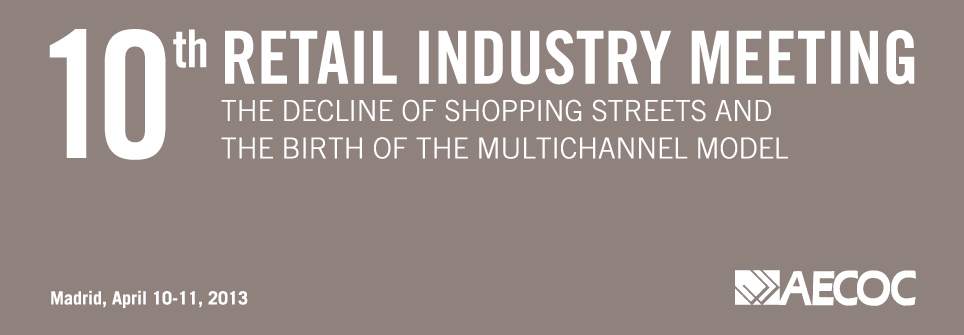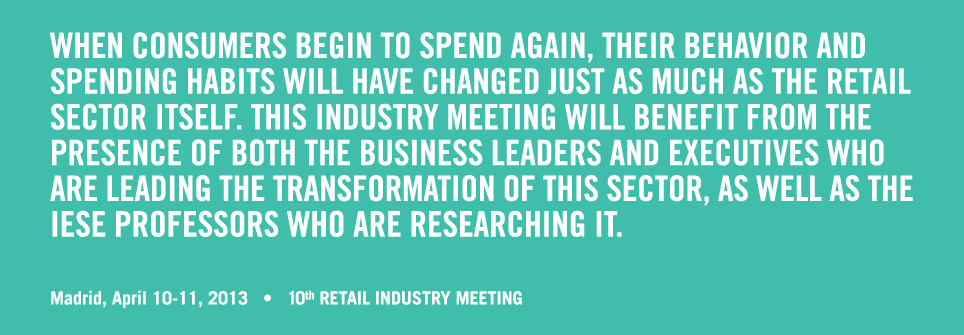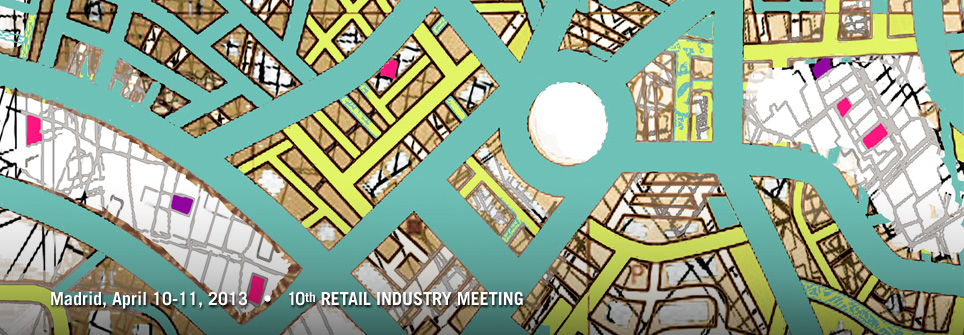
10th Retail Industry Meeting



Introduction
The Decline of Shopping Streets and the Birth of the Multichannel Model
Once the economy starts to recover and consumers start shopping again, their consumer habits and patterns will be as different as the retail industry itself.
Retail will have experienced changes in terms of technology and value propositions and will continue to be immersed in a transformation whose causes are closely linked to the profound and prolonged drop in consumption. Location will take on so much importance that it will become a kind of tyranny. Class-A shopping streets and malls (i.e., the ones with the best locations) will take market share away from those in secondary locations. Prime locations in the best shopping areas are no longer affordable, whereas many streets in close proximity to these areas will fill up with empty shop fronts available at any price as independent shopkeepers and chain stores close up and move out.
Technology will be both the cause and the effect of this transformation. Alternative channels that complement this rational form of business include new formulas such as mobile commerce and e-commerce, which are inextricably linked to face-to-face business. Consumers use these formulas to acquire information, locate stores, find out about retailers' product availability and special offers, and gain access to the opinions and recommendations of other consumers. They do all this before visiting the store with a real intention to buy.
Some empty shops will be taken over by manufacturer outlet stores and services companies interested in having a brick-and-mortar presence. They will have permanent or short-lived formats where all buying tasks can be accomplished at once or where emphasis will be placed on only a few tasks: as a key product presentation, testing or demonstration point that has the most impact on the market, even though the order is handled from a central logistics center and the product is delivered to the buyer's home; or as a pickup and return center for online and telephone purchases.
Being able to offer the best price, immediate availability of the entire product range or a unique and memorable brand experience at the point of sale represent demanding changes in value propositions and ways of attracting consumers to the store. The consumers who frequent these establishments will also be very different. But not all of the ones who stopped shopping in the recession years will be back. Some will be excluded against their will as a result of radical changes in their own finances and those of their loved ones. Others will not return because their attitudes and convictions have changed more than their objective conditions. Almost all of them will understand that the premises they based their previous spending on will be weaker. More than two thirds of those who return will seem to be the same, but they will be less impulsive, more used to locating information, and much more exposed and adventurous when it comes to trying alternative methods of purchasing a specific product. They will therefore be more prepared to look for the products they want and to distribute their spending. They will be ready to make last-minute changes about how and where they shop if they discover that a better deal can be had in the shop next door.
This Industry Meeting will feature executives and business people whose impetus is driving change in this ever-changing environment, as well as IESE professors whose research focuses on this field.
The challenges this year and the years to come will have a major impact on us all. On April 10-11, 2013, you will have the opportunity to take a break from your everyday job, join a group of industry leaders, share ideas and points of view, and then go back to your company 36 hours later with new perspectives on the future and a plethora of fresh ideas to inspire your work.